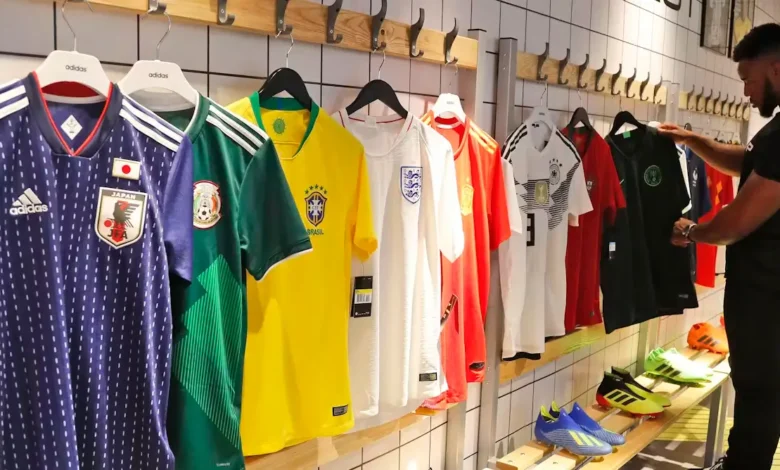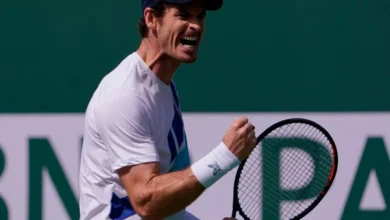Why Soccer Jerseys Are More Than Just Sportswear

Introduction: The Symbolism Woven in Fabric
To many, a soccer jersey might appear to be just another piece of athletic clothing—an outfit designed to wick away sweat and provide comfort on the pitch. But for millions of fans around the world, soccer jerseys are far more than simple sportswear. They are woven with identity, pride, heritage, and even politics. They symbolize loyalty, cultural significance, and emotional connections that span generations. Whether worn in packed stadiums, dusty streets, or casual meetups, a soccer jersey carries a story that goes beyond the game.
This article dives deep into why soccer jerseys hold such a profound place in global culture. We will explore their evolution, cultural impact, emotional ties, fashion crossover, and role in identity formation—unpacking why these garments resonate far beyond the 90 minutes of a match.
1. A Brief History of the Soccer Jersey
Soccer jerseys have evolved significantly since the game’s early days in the 1800s. In those times, players wore heavy cotton shirts, often with lace-up collars, which were not optimized for physical exertion. Colors were basic and primarily used to differentiate teams rather than convey identity.
As the sport professionalized, jerseys began to change. The 1950s and ’60s introduced more modern materials and iconic designs. Clubs like Real Madrid and Manchester United popularized distinct color palettes that became synonymous with their brands. The introduction of synthetic fabrics in the 1970s allowed for more comfort and durability, leading to the dynamic, moisture-wicking, aerodynamic shirts we see today.
Beyond performance enhancements, the jersey became a canvas for branding, sponsorship, and national pride. From Adidas to Nike, Puma to Umbro, kit makers began blending style with utility, resulting in iconic designs that would become culturally significant in their own right.
2. Soccer Jerseys as Cultural Identity
Wearing a soccer jersey is often an act of cultural expression. For example:
- Brazil’s Yellow and Green: Brazil’s canary-yellow jersey, with green trim and blue shorts, is a symbol of joy, flair, and attacking football. It reflects the nation’s samba style and cultural vibrancy.
- Argentina’s Sky Blue and White: These colors are not just part of the flag but also a badge of national resilience, especially during periods of economic and political difficulty.
- Nigeria’s Bold Prints: The 2018 World Cup jersey for Nigeria became a global fashion phenomenon. It represented the nation’s youthful energy, creativity, and its dynamic diaspora.
These jerseys transcend the sport and become deeply embedded in national culture. Fans wear them with pride, not only to support their teams but also to assert identity and belonging.
3. Emotional Connections: More Than a Game
For many fans, a soccer jersey represents cherished memories. It could be the jersey worn during a nation’s greatest victory or the kit associated with a beloved player’s most legendary performance. People often keep their old jerseys not for their material value but because they are connected to personal or collective experiences.
Consider:
- A father handing down his 1998 France World Cup jersey to his child.
- A group of friends reliving childhood memories wearing the 2006 Italy kit.
- A Liverpool supporter clutching the 2005 Champions League final shirt after that unforgettable comeback in Istanbul.
The emotions stitched into these garments cannot be replicated. They become personal relics—each with its own story.
4. Soccer Jerseys and Politics
Soccer and politics have always been intertwined, and jerseys often serve as subtle (or not-so-subtle) political statements. From resistance to nationalism, jerseys have played a symbolic role.
- Catalonia and FC Barcelona: The Blaugrana jersey represents more than a club. It symbolizes Catalan identity and resistance, especially during Spain’s Francoist regime, where Catalan culture was suppressed.
- Iran’s 2022 World Cup Team: Some players appeared to silently protest during the national anthem, and their jerseys were focal points of international political commentary during the tournament.
- Black Lives Matter Movement: In 2020, many clubs across Europe added social justice patches or allowed players to customize the back of their jerseys to promote unity and anti-racism.
Thus, wearing a soccer jersey can also become an act of political or social solidarity.
5. Jerseys in Fashion: The Streetwear Crossover
In recent years, soccer jerseys have transcended stadiums and entered the world of fashion. Influencers, rappers, designers, and celebrities have embraced them as part of streetwear culture. Vintage jerseys, in particular, have become highly sought-after fashion items.
Reasons for this crossover include:
- Retro Aesthetic: Designs from the ’90s and early 2000s have a nostalgic, bold appeal. Think Italy’s 1994 kit or Germany’s 1990 design.
- Collaborations: High-end brands like Balenciaga and Virgil Abloh’s Off-White have incorporated football-inspired elements into their collections.
- Accessibility and Versatility: Soccer jerseys are unisex, comfortable, and easy to style with jeans, joggers, or even blazers for a fusion look.
With rising demand, many fans now buy jerseys not just to support teams but also to make a fashion statement.
6. The Commercial Side: Big Business, Bigger Meaning
The global soccer jersey market is worth billions. Clubs like Manchester United, Real Madrid, and FC Barcelona sell millions of jerseys annually, with player names like Ronaldo, Messi, and Mbappé leading in sales.
But while commerce drives jersey innovation, it also raises issues:
- Frequent Kit Changes: Some clubs release up to three new kits each season. This can be seen as a money grab by fans.
- Affordability Issues: Official jerseys can be prohibitively expensive for working-class fans, leading to debates around authenticity vs. accessibility.
Still, purchasing a jersey remains one of the most tangible ways for fans to show support, whether at home, in stadiums, or across oceans.
7. Youth Aspirations and Role Models
For young fans, wearing a jersey is often about emulating heroes. A child wearing a Haaland or Messi shirt isn’t just a fan—they are channeling their dreams. The jersey becomes armor, transforming ordinary play into imagined greatness.
This emotional connection fuels dreams, motivates training, and helps foster ambition. Clubs often use jersey launches with youth participation to underscore this aspirational aspect.
8. The Ritual of Buying and Wearing
Buying a soccer jersey is often an event. Whether it’s waiting for a new drop, queuing outside club stores, or ordering online, fans treat it as a ritual.
Some traditions include:
- Getting the new jersey before the season starts.
- Personalizing it with a favorite player’s number or one’s own name.
- Wearing it during matchdays, not washing it during winning streaks, or passing it among friends for luck.
It’s not just a purchase—it’s a tradition passed down and deeply felt.
9. Collecting Jerseys: A Hobby with Heart
Many fans become collectors, amassing jerseys from different eras, clubs, and nations. Collecting becomes a way to preserve soccer history.
Popular collector items include:
- World Cup edition jerseys.
- Jerseys from now-defunct teams.
- Rare misprints or limited editions.
Collectors don’t just value the aesthetics—they cherish the memories and significance attached to each shirt. For these individuals, jerseys are like museum artifacts, each carrying a unique chapter of football lore.
10. Where to Buy: Authenticity and Affordability
While official kits can be expensive, there are now more accessible options for fans to find high-quality jerseys without breaking the bank. One trusted source for premium-quality soccer jerseys is Soccer04. They offer a wide range of club and national team jerseys at affordable prices without compromising on design or comfort.
Whether you’re looking to relive past glories or support your favorite team in the present, Soccer04 makes it easy to own a piece of the beautiful game.
Conclusion: A Jersey Is a Statement
To outsiders, a soccer jersey might just be polyester with a logo. But for fans, it is memory, identity, culture, and belief all sewn into one. It is the symbol of victory and heartbreak, community and individuality, rebellion and pride.
From the slums of Rio to the pubs of Manchester, from packed stadiums in Rome to dusty pitches in Ghana—soccer jerseys are everywhere. They unite people across languages, religions, and borders. They tell stories. They start conversations. They are flags worn on chests, stitched with meaning that only a true football fan can fully understand.
Indeed, a soccer jersey is not just sportswear. It’s a way of life.



